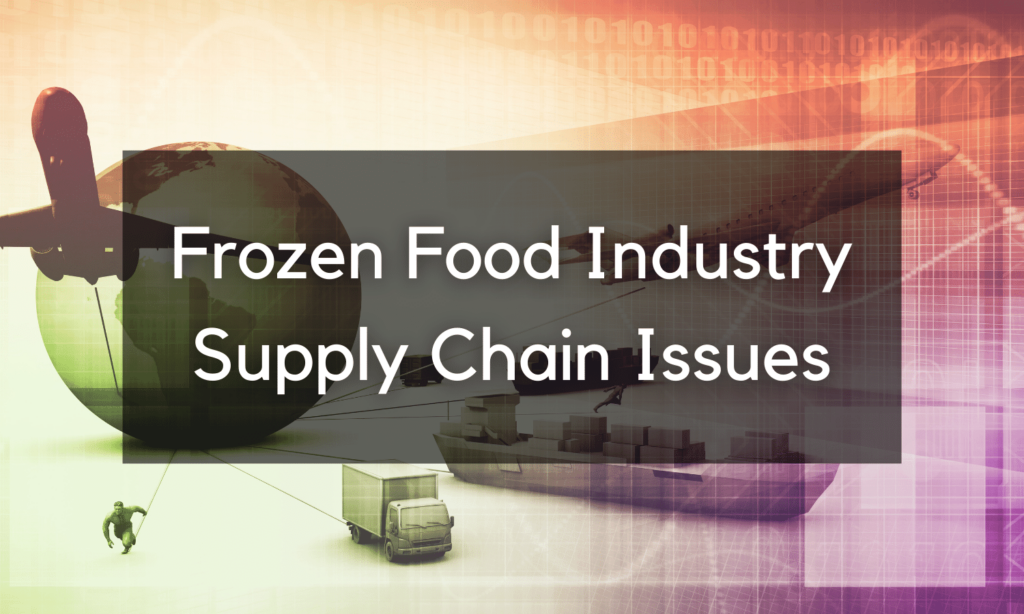The U.S. frozen food industry, as part of the food supply chain, is facing unprecedented supply chain hurdles and inflationary pressures across the board. The frozen food industry is working hard to find immediate and long-term solutions to ensure Americans have convenient access to a variety of nutritious and satisfying foods they desire.
A snapshot of the current supply chain environment
Labor
The frozen food industry’s essential workforce is our most important asset. The lack of labor was the industry’s major challenge even before the COVID-19 pandemic. In fact, according to the National Association of Manufacturers, finding the right talent is now 36 percent harder than it was in 2018.
From production and packaging to managers and food safety consultants, the industry is facing some serious shortages. Seventy-seven percent of manufacturers say they will have ongoing difficulties in attracting and retaining workers.

Ingredients
Frozen food makers are facing unprecedented ingredient shortages and eliminations, leading to regulatory compliance issues, such as labeling, constant reformulation of products, and being unable to provide retailers the products they expect.
For example, due to skyrocketing diversion of soy and canola oil to make biofuels for government transportation subsidies, manufacturers face crisis-level shortages in edible vegetable oil for producing many frozen foods that could lead to employee layoffs and closures of food companies.
Transportation
From ports to rail yards, global supply lines are struggling. Driver shortages put additional strain on the supply chain. Increased fuel prices directly impact the cost of freight to ship ingredients and supplies to make frozen foods.
Here’s how today’s frozen food makers are overcoming these supply chain challenges
Frozen food makers are facing higher input costs, like ingredients and transportation costs. Families have seen costs increase for almost all consumer goods, including some items at the grocery store.
“We are notified daily that suppliers are eliminating ingredients and supplies…even on the day of shipment. As a result, we are constantly reformulating products multiple times per day because of these notifications.”
– Frozen Food Maker
“Our appetizers are packaged using thinner paper packaging than our other products and the paper is hard to find. The lead time used to be 6 weeks, now it’s 20 weeks, and 20 is questionable.”
– Frozen Appetizer Maker
“We are working on trying to import labor. Visa programs are full. We will have to wait until October 2022 to apply as the spring application period is full and closed.”
– Frozen Meal Maker
“Our absentee rate went from 5% to 20%. We are operating 6 days a week to produce 5 days of inventory. People don’t want to work 6 days a week every week, and they have been for almost two years, so turnover is very high.”
– Frozen Meal Maker

“Since July 2020, we’ve increased wages over 56% and we’re still at the bottom end of the pay scale.”
– Frozen Potato Maker
“Trucks to New York pre pandemic cost $4,500, now it’s more than $10,000 due to increased fuel costs and driver shortage and competition with other products that require cold storage.”
– Frozen Potato Maker
“Shipping containers before the pandemic were between $3,000-$5,000; now they’re $20,000.”
– Frozen Snack Maker
80% of food retailers say workforce challenges are negatively impacting business and affecting the food industry’s ability to bring some products to grocery shelves.
– FMI.org
The industry is rising to the challenge
Despite the current challenging supply chain environment, America’s frozen food makers are rising to the challenge to keep Americans fed. Although, it will only get more and more difficult to keep up with demand and continue to meet all of the safety standards necessary to remain food safety certified.
The American Frozen Food Institute is urging leaders to provide relief on policies that are contributing to the supply chain challenges leading to potential economic instability for domestic food production.

